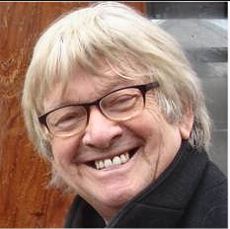A report by Amnesty International published on 3 May warns that Northern Ireland is the most dangerous place in the UK to work as a journalist. They frequently face attacks, death and rape threats from paramilitary and organised crime groups that act with impunity: https://www.amnesty.org.uk/resources/occupational-hazard-protect-journalists-northern-ireland-report .
Some of those interviewed for the 96-page report, said they had protected their homes with bulletproof windows and doors and alarms linked to police stations.
Others have been told they will be shot, stabbed and attacked. They are warned of bomb threats, including under-car booby trap bombs. They are shouted at in the street and graffiti is painted on walls with their names beside gun crosshairs. They are given 48-hour ultimatums to leave the country or be killed.
The report highlights that several journalists testify they are receiving more threats in recent years than ever before. It goes beyond threats: they are physically attacked. Their equipment is damaged. Petrol bombs are thrown at their cars and pipe bombs left close to their homes. One journalist was shot in the leg, and two journalists, Martin O’Hagan and Lyra McKee were killed in 2001 and 2019 respectively.
Amnesty International’s research uncovered at least 71 incidents of threats or attacks on journalists in Northern Ireland since the start of 2019. These threats and attacks were experienced by freelancers and journalists working for a wide range of media organisations. This includes the BBC, UTV, PA Media, the Irish News, Reach, Mediahuis and the Impartial Reporter.
Séamus Dooley, NUJ assistant general secretary, has welcomed the report for revealing the scale and severity of threats, intimidation, and violence against journalists in Northern Ireland: https://www.nuj.org.uk/resource/reporters-speak-out-about-climate-of-fear-in-northern-ireland-amid-paramilitary-death-threats.html
Speaking at the launch of the report in Belfast he said: “The report makes for grim reading and should serve as a wakeup call: to the police, to those involved in the administration of justice, to politicians, to those who control online platforms and crucially to all of us work in the media industry, including editorial executives and HR managers.The onus is now on us to respond to these stark findings and to build on some of the measures already in place – and to develop new, collaborative structures to protect journalists and journalism in Northern Ireland….”
Patrick Corrigan Amnesty International Northern Ireland Director said:
“Journalists in Northern Ireland are facing a sustained campaign of threats, intimidation and violence from armed groups, which makes it the most dangerous place in the UK to be a reporter. They are being threatened, attacked and even killed for shining a light on paramilitary groups and others who seek to exert control through violence. This creates a climate of fear that many assumed was consigned to history when the Good Friday Agreement was signed. Yet there has not been a single prosecution for threats against journalists from paramilitary groups. This sense of impunity only emboldens those behind the threats. When journalists are under attack, press freedom is under attack. The state must create a safe environment where journalists can work freely and report without fear of reprisals. It is currently failing to do so.”
PIc by Kevin Cooper NUJ shows Seamus Dooley (right) with the report’s authors Patrick Corrigan and Kathryn Torney.

